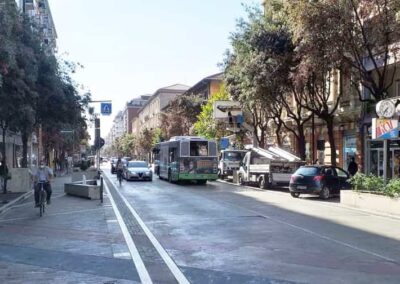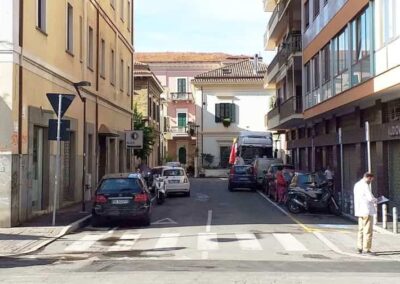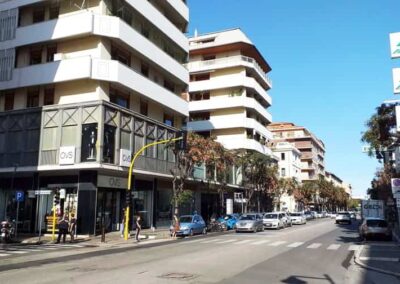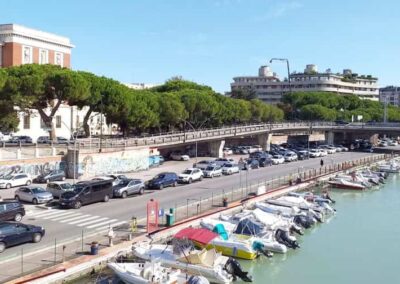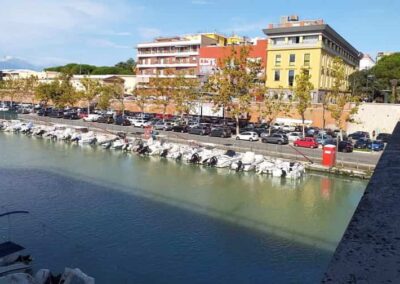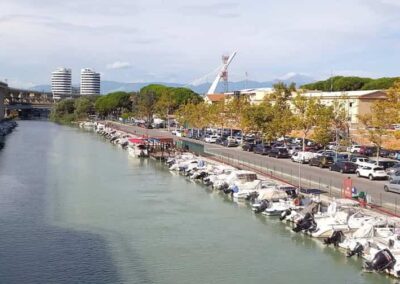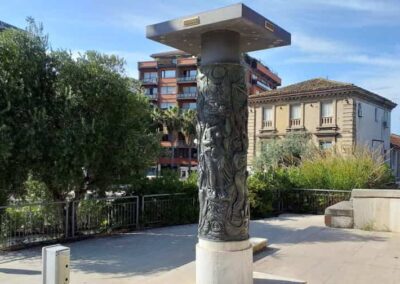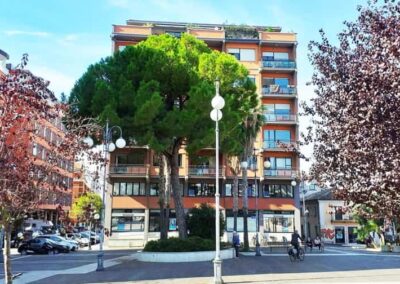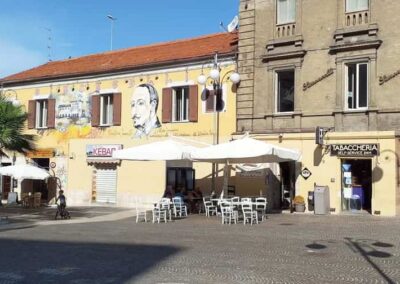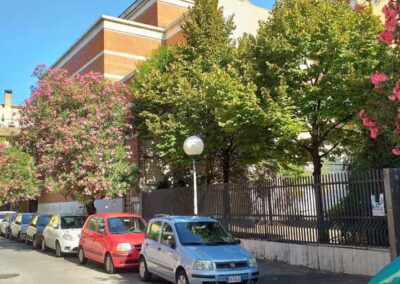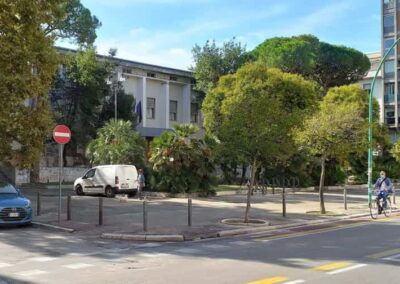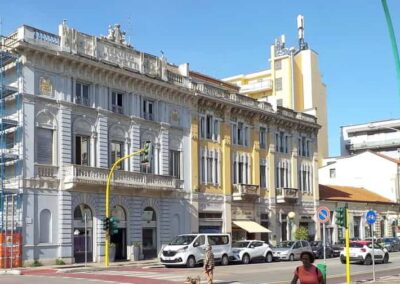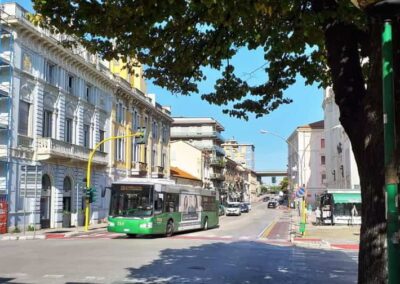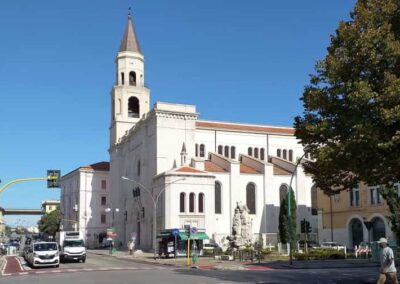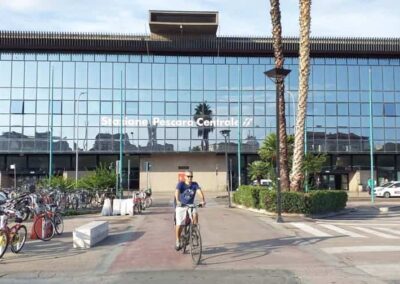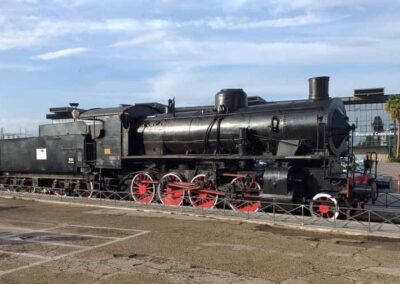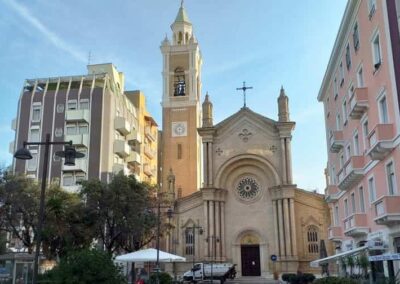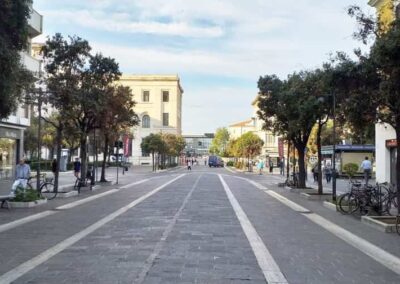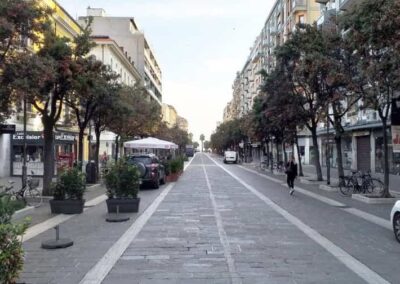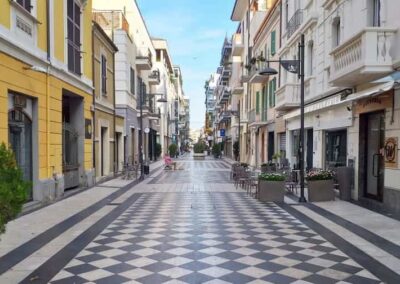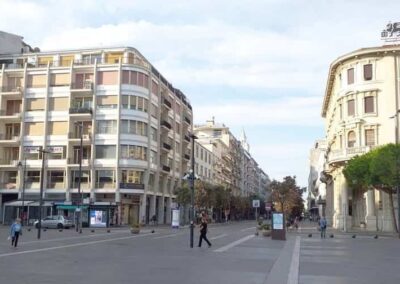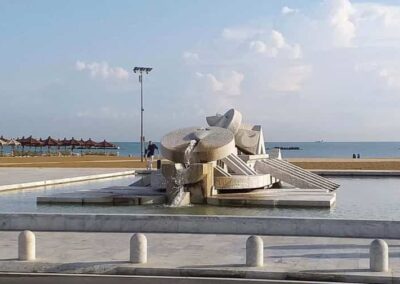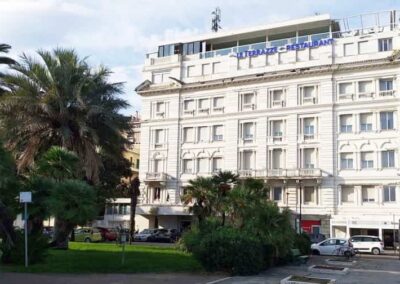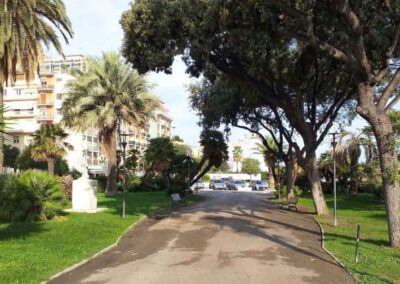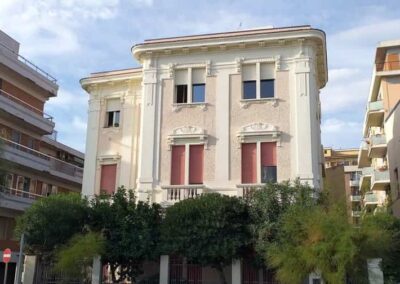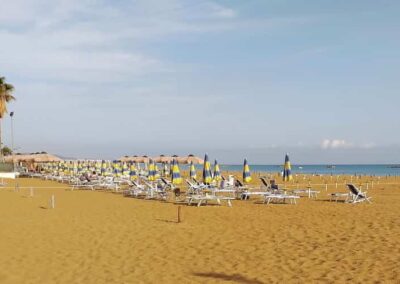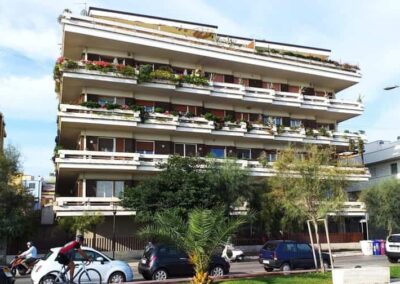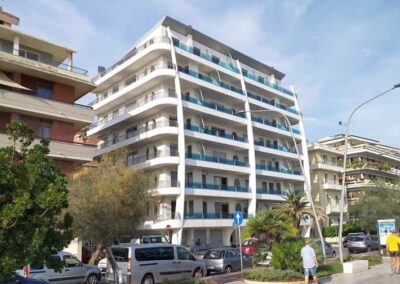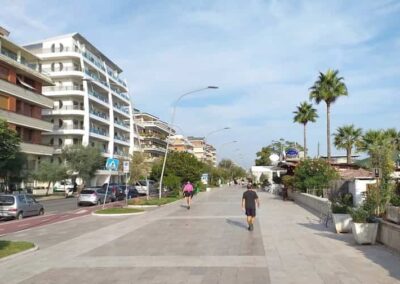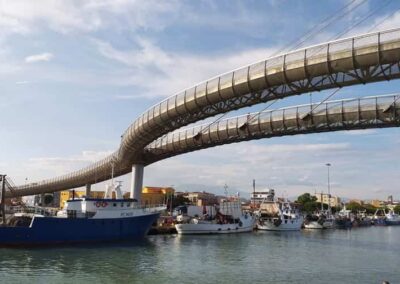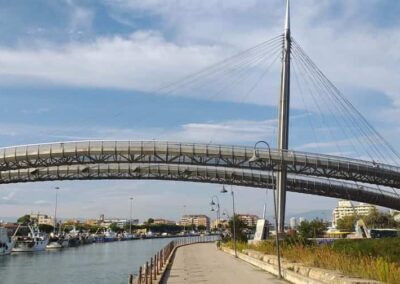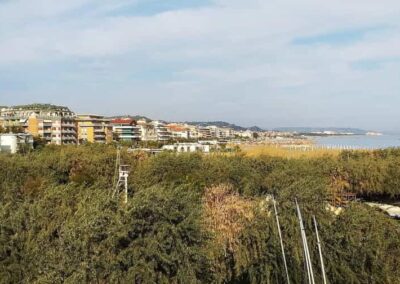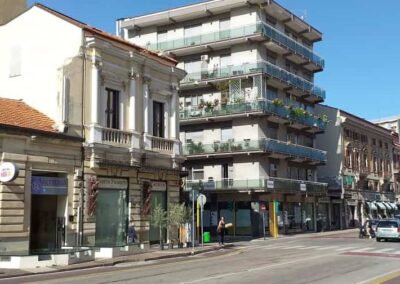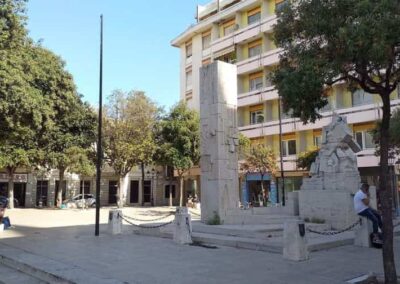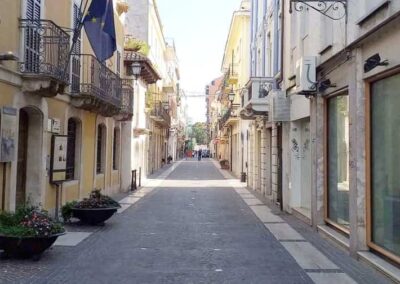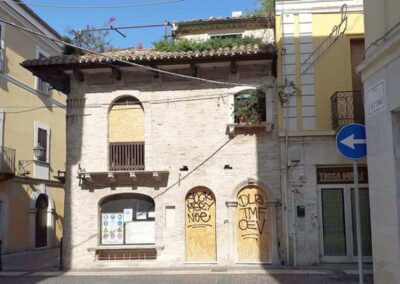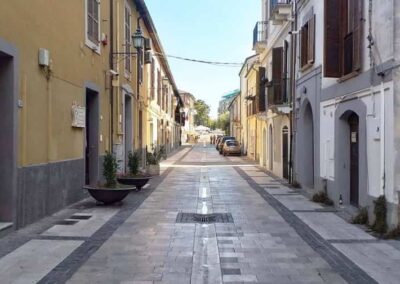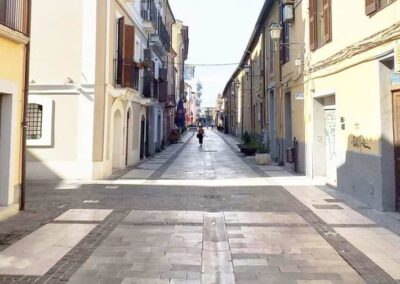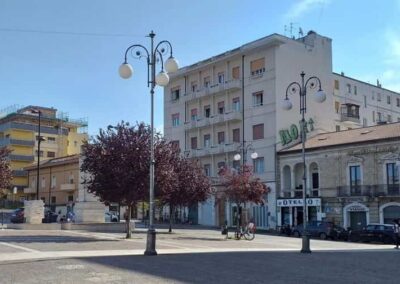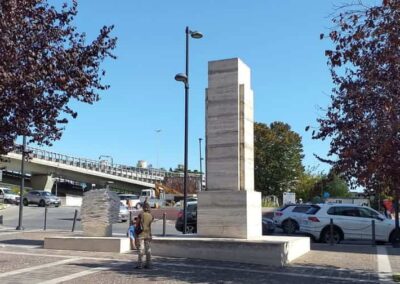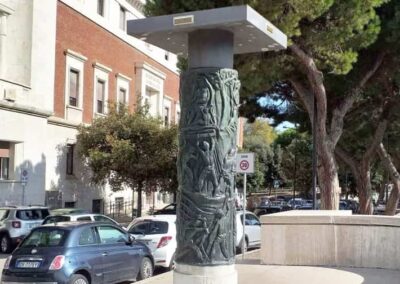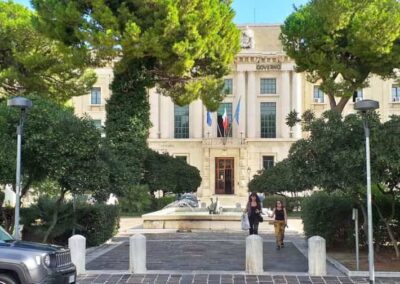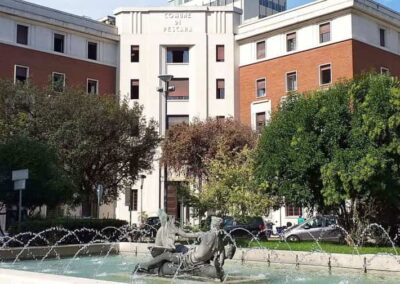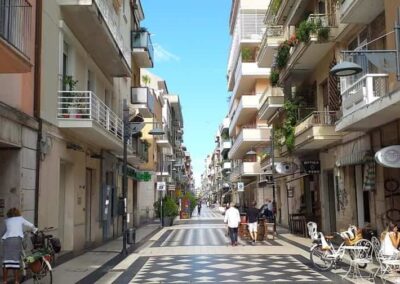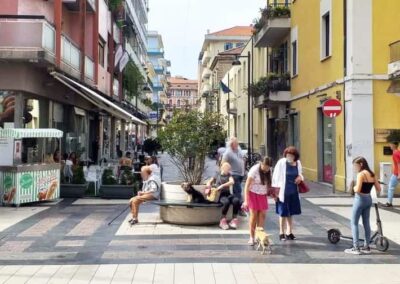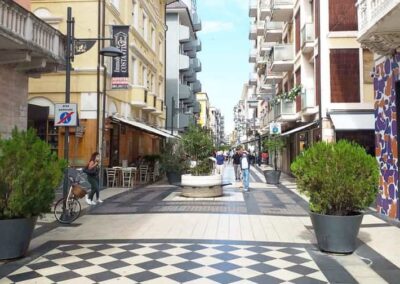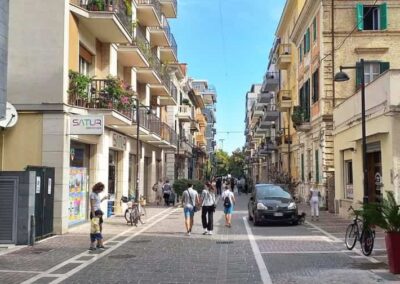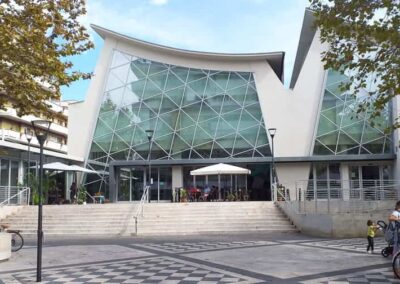HOME
THE REGIONS OF ITALY
PLACES IN ITALY
Italy in Photos
Ponte Risorgimento, 65122 Pescara PE (September 2020)
Pescara
Pescara, a lively and dynamic city located on Italy’s Adriatic coast, is a place where natural beauty, history, and modernity converge. As the largest city in the Abruzzo region, Pescara serves as a vital economic, cultural, and transportation hub. Known for its stunning beaches, rich historical background, and vibrant urban life, Pescara attracts visitors from across Italy and beyond, offering a unique blend of experiences that cater to a variety of interests. Pescara’s strategic location along the Adriatic Sea has been central to its development over the centuries. The city is divided by the Pescara River, which flows from the Apennine Mountains and empties into the Adriatic. This natural feature has played a significant role in the city’s history, serving as a natural boundary and a resource that facilitated trade and transportation. The history of Pescara dates to ancient times when it was known as Aternum, a significant port during the Roman era. Aternum was a key trading centre, linking Rome to the eastern Mediterranean via the Adriatic. The remains of the ancient Roman settlement, including parts of a bridge and roads, can still be seen in the area, serving as a testament to Pescara’s long and storied past. Throughout the Middle Ages, Pescara was contested by various powers due to its strategic location. It was part of the Kingdom of Sicily and later the Kingdom of Naples, and during these periods, the city experienced both growth and conflict. The modern city of Pescara, however, only began to take shape in the 19th century, following the unification of Italy, when it became an important military and industrial centre.
Today, Pescara is a bustling urban centre with a population of over 120,000 residents. The city is characterized by its modern architecture, wide boulevards, and a vibrant cultural scene. Pescara’s economy is diverse, with strong sectors in tourism, commerce, industry, and services. The city’s port remains a key asset, serving as a gateway for trade and travel to and from the Adriatic and beyond. One of Pescara’s most significant modern developments is its role as a transportation hub. The city is home to the Pescara Centrale train station, which connects it to major cities such as Rome, Milan, and Bologna. Additionally, Pescara has an international airport, Abruzzo Airport, which provides access to various European destinations. This connectivity has made Pescara a convenient destination for both business and leisure travellers. Pescara has a rich cultural life, with numerous museums, galleries, and theatres that celebrate its artistic heritage. One of the city’s most famous sons is the poet Gabriele D’Annunzio, a prominent literary figure in Italy. The house where he was born, Casa Natale di Gabriele D’Annunzio, has been preserved as a museum, offering insights into his life and works.
The city also hosts various cultural events throughout the year, including the Pescara Jazz Festival, one of the oldest and most prestigious jazz festivals in Italy. This event attracts renowned musicians from around the world and adds to Pescara’s reputation as a vibrant cultural centre. Pescara is renowned for its beautiful coastline, which stretches for several kilometres along the Adriatic Sea. The city’s beaches are some of the best in Italy, featuring soft golden sands and clear blue waters. These beaches are a major draw for tourists, particularly during the summer months when the city comes alive with beachgoers, festivals, and nightlife. The Lungomare, Pescara’s seafront promenade, is a popular spot for walking, cycling, and enjoying the sea breeze. Lined with palm trees, cafes, and restaurants, the Lungomare offers stunning views of the Adriatic and is a central part of the city’s social life. Beyond the beaches, Pescara is surrounded by natural beauty. The nearby Apennine Mountains offer opportunities for hiking, skiing, and exploring Italy’s rugged interior. The region is also home to several national parks, including the Majella National Park, known for its diverse flora and fauna.
Pescara is a city of contrasts, where the old meets the new, and the natural world blends seamlessly with urban life. Its historical roots as an ancient port and its modern status as a thriving city create a unique atmosphere that is both welcoming and dynamic. Whether you’re interested in history, culture, or simply relaxing by the sea, Pescara offers something for everyone. Pescara is not just a gateway to the Adriatic, but a destination in its own right. With its rich history, vibrant culture, and stunning natural surroundings, Pescara invites visitors to explore its many facets and discover the unique charm of this coastal city. Whether strolling through its modern streets, enjoying its beaches, or delving into its past, Pescara offers a diverse and enriching experience that captures the essence of Italy’s Adriatic coast.
Worth a Visit

Piazza del Sacro Cuore is a central and vibrant square in Pescara, serving as a focal point for both locals and visitors. Located near Corso Umberto I, one of the main shopping streets in the city, the piazza is a bustling hub of activity, offering a mix of commercial, cultural, and social experiences. At the heart of the square stands the Church of the Sacred Heart (Chiesa del Sacro Cuore), a beautiful 20th-century structure that gives the piazza its name. The church’s architecture, characterized by its elegant façade and tall bell tower, adds a touch of historical charm to the otherwise modern surroundings. This religious site is a key landmark in Pescara, often visited by those looking to admire its design or partake in a moment of reflection. The piazza is surrounded by a variety of shops, cafes, and restaurants, making it a popular spot for leisurely strolls, shopping, and dining. The atmosphere is lively, especially in the evenings when locals gather to enjoy the area’s vibrant social scene.
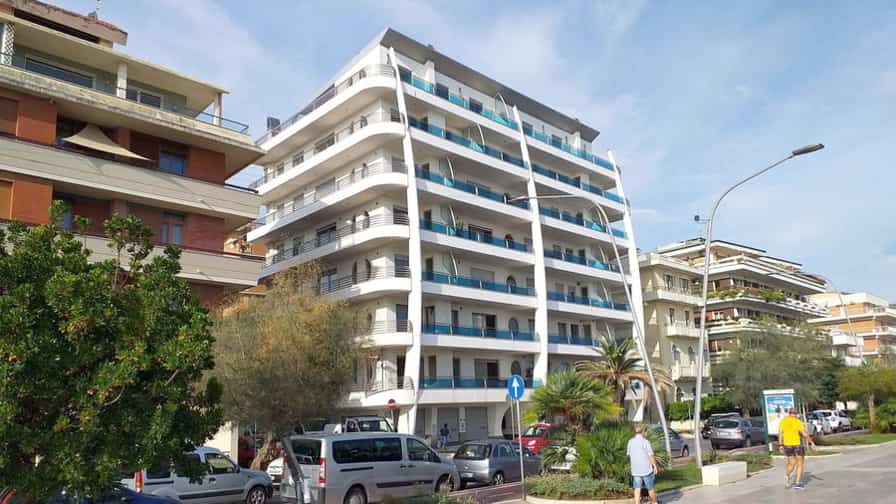
Lungomare G. Matteotti is a scenic coastal promenade in Pescara, offering stunning views of the Adriatic Sea and serving as a vibrant hub for leisure and recreation. Stretching along the northern section of Pescara’s coastline, this promenade is lined with palm trees, modern amenities, and wide pedestrian pathways, making it a favourite spot for both locals and tourists. The promenade is ideal for a range of activities, from leisurely strolls and jogging to cycling along the dedicated bike lanes. Along the way, you’ll find an array of cafes, gelaterias, and restaurants, where visitors can enjoy local cuisine while taking in the refreshing sea breeze. The area is particularly lively during the summer months, with beachgoers flocking to the adjacent sandy beaches and various events, such as open-air concerts and festivals, taking place.
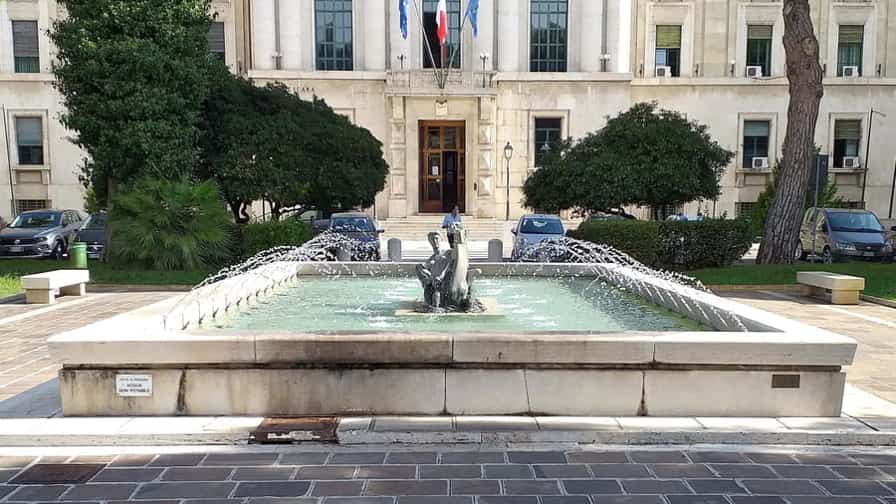
Piazza Italia in Pescara, is a significant civic and administrative centre, playing a crucial role in the city’s public life. This square is home to some of Pescara’s most important governmental buildings, including the Palazzo del Governo (Provincial Government Building) and the Municipio (City Hall). These structures, with their imposing and elegant architecture, lend a sense of gravitas to the square, underscoring its role as a hub of civic activity. The square itself is spacious and well-maintained, featuring wide walkways, neatly arranged greenery, and modern public art installations. It is often a site for official ceremonies, public gatherings, and cultural events, making it a focal point for community engagement in Pescara. Piazza Italia is also strategically located near the Pescara Centrale train station and Corso Vittorio Emanuele II, one of the city’s main thoroughfares, ensuring that it is easily accessible and well-connected to other parts of the city.
Photo Gallery of Walk 1 – Corso Vittorio Emanuele II to Cattedrale di San Cetteo, Piazza San Cetteo
Approximately 1.47 km – 0.91 miles
The walk starts in Vittorio Emanuele II – Piazza Duca D’Aosta – Ponte Risorgimento – Piazza Unione – L.go dei Frentani – Via Angiolieri Cecco – Via Conte di Ruvo – Viale Gabriele D’Annunzio – Cattedrale di San Cetteo, Piazza San Cetteo
Photo Gallery of Walk 2 – Piazza della Repubblica to Ponte del Mare, Lungomare Colombo
Approximately 2.35 km – 1.46 miles
The walk starts in Piazza della Repubblica – Corso Umberto I – Piazza del Sacro Cuore – Corso Umberto I – Via C. Battisti – Corso Umberto I – Piazza della Rinascita – Corso Umberto I – Piazza I Maggio – Lungomare G. Matteotti – Lungomare Colombo – Ponte del Mare, Lungomare Colombo
Photo Gallery of Walk 3 – Viale Gabriele D’Annunzio to Via C. Battisti
Approximately 1.92 km – 1.19 miles
The walk starts in Viale Gabriele D’Annunzio – Piazza Giuseppe Garibaldi – Via Lago di Scanno – Via Catone – Via delle Caserme – Ponte Risorgimento – Piazza Duca D’Aosta – Piazza Italia – Via Calabria – Via Firenze – Via Roma – Via Firenze – Via C. Battisti
COPYRIGHT © 2018-2025 ITALY IN PHOTOS - ALL RIGHTS RESERVED
